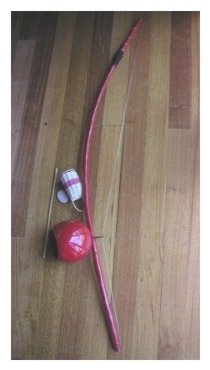BERIMBAU Heart of Capoeira

The berimbau consist of a wooden stick which is strung with a steel string to form the
bow shape, a gourd with an opening on one side which acts as a resonator,
a coin or stone, a thin bamboo stick, and a basket shaker called caxixi. Traditionally
in capoeira (the Brazilian martial arts style) the berimbau rhythms
are accompanied by the following percussion instruments; pandeiro (a tambourine with a head and flat jingles), agogo (two iron bells), reco
reco (a bamboo scrapper) and atabaque (tall barrell style hand
drum). All these instruments give the capoeira a very distinctive
and unique sound. During the jôgo de capoeira (game
of capoeira) various traditional, folkloric and improvised songs
are sung accompanied by clapping.
The technique of playing the berimbau is
unique and quite hard to master, as you not only have to hold the bow and
balance it with the left hand, but are also required to hold a coin or
stone with the thumb and first finger. The right hand holds the stick
which strikes the string. It also holds a small basket shaker called caxixi,
which plays along with the stick and also plays independent strokes. The basic sounds played with the stick are: high tone (with the coin or
stone pressed against the string), buzz tone (with the coin or stone pressed
lightly on the string) and low tone (open string note). The left
hand with the coin produces a very soft passing tone.
The berimbau can produce distinctive rhythms
called toques that are easily recognised by the capoeristas (capoeira game
participants). Some of this toques de berimbau are common
to all schools, while others are developed by different mestres (masters)
and played by their students. Some of these rhythms are related to
African nations such as Angola and Ijexa, some refer to Catholic saints,
while some were used to alert the participants. As an example the
rhythms known as aviso and cavalaria were used traditionally
to advice the participants of the arrival of a stranger, the police, or
the cavalry squadron to the circle.
Toque de Angola

In terms of my own experiences with the berimbau I have a Brazilian made instrument, and also one I made myself, which I
must say possesses a better tone. The first time I heard the berimbau was on an Airto Moreira record. I found the sound and the rhythms
fascinating, soon after I made my first berimbau. My interest
in the instrument is for the musical qualities which I tend to incorporate
to original compositions and performances. I have a composition on
my first cd (Alex Pertout) titled Manaus in which I played
two berimbaus, the fundamental notes tuned a fourth apart. On the release by the legendary Australian saxophonist Brian Brown (Flight - Newmarket 3014.2), one is my compositions titled Friendship is featured, the piece is rhythmically based on a berimbau rhythm.
The practice of using the berimbau outside
of its traditional role is not always appreciated by many associated with capoeira.
According to Almeida (1986) "many berimbau players are not capoeristas, because
the instrument can be played out of the context of capoeira, as
in samba de roda, or even as a rhythmical instrument in contemporary
music." And although he makes mention of Nana Vasconcelos and Paulinho Da Costa
as "two excellent percussionists who produce extraordinary effects with
the berimbau", he somehow expresses the view that "the exclusive use of the berimbau to make music with no relation to capoeira is for me not correct."
Highly recommended recordings featuring the berimbau include:
▪ Capoeira Senzala De Santos
Capoeira, Samba de Roda, Maculelê (Buda 92575-2)
▪ Paulinho Da Costa
Agora (Pablo OJCCD 630-2)
▪ Airto Moreira
The Essential (Buddah BDS 5668-2 LP)
▪ Nana Vasconcelos
Saudades (ECM1-1147 LP)
▪ Papete
Berimbau E Percussao (Universal
Sound USCD7)
▪ Black Music Of South America
In Praise Of Oxalá And Other Gods (Nonesuch H-72036)
▪ Sergio Mendes
Primal Roots (A&M L34603 LP)
▪ Mickey Hart
Planet Drum (Rykodisc RCD 10206)
Highly recommended books include:
▪ Almeida, Bira
Capoeira A Brazilian Art Form; History, Philosophy
and Practice 1986
▪ Rugendas, Joao M
Viagem Pitoresca Atraves do Brasil 1954
▪ Shaffer, Kay
O Berimbau De Barriga e Seus Toques 1986
For further information including an audio sample please click here.
© Alex Pertout. All rights reserved.
No part of this article
may be reproduced without prior written permission from the author. This article was first published in Drumscene magazine.
|

